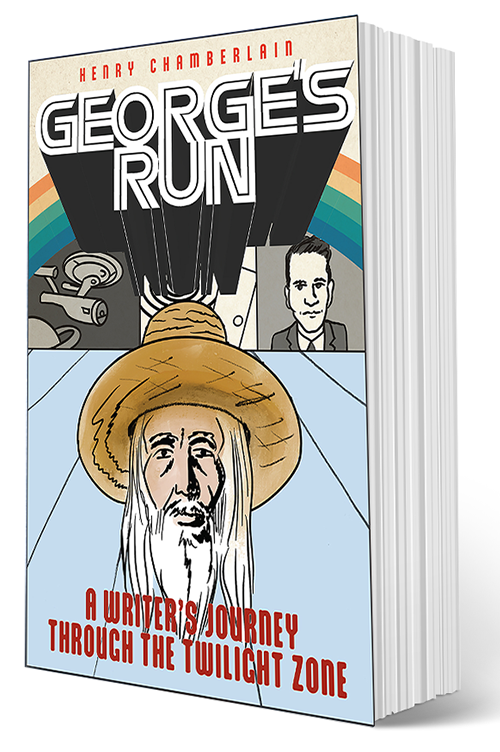
Sophie’s World: a Graphic Novel about the History of Philosophy, Volume II: From Descartes to the Present Day. SelfMadeHero, London, 2023. 260pp. $29.95. Scripted by Vincent Zabus, based on the novel by Jostein Gaarder, drawing by Nicoby, color by Philippe Ory, translation by Edward Gauvin.
Guest Review by Paul Buhle
The publishing of novels is, of course, centuries old, in thousands of languages, and even after the competition of radio, television and the Internet, a hugely successful commercial business. By notable contrast, the Graphic Novel owes its prominence to the 1990s, in the US at least, and despite the awards handed out by various institutions, perhaps it came too late to find a secure footing.

Hardly had the virtual ink dried on a distribution deal for Fantagraphics in the late 1990s, when video games had begun to eat at the lower-age edge. According to some close observers, the age average of the adult reader has meanwhile continued to rise, as gainfully employed adults, 30 or over, take to GNs as a newer version of the “art book” seen for generations on the coffee tables of sophisticates. Perhaps these two trends might balance out, or perhaps not. Parents and grandparents may need, in the years ahead, to force educational comics on their pre-adolescents, an experiment rarely altogether successful. Art Spiegelman insisted, long ago, that with the demise of the daily funny pages, comics as a form of expressive entertainment had lost its practical basis, and would be forced into the world of art and even the museum.
Still, the market for self-improvement or “encouraged self-improvement” is likely to be large for some time to come. A French original translated into English for SelfMadeHero in the UK, Sophie’s World: A Graphic Novel about the History of Philosophy, saw its first volume covering the Ancient World to Descartes. According to this volume’s final page, the literary original was a world-wide best seller, prompting the Norwegian author, Josein Gaarder, to donate a large chunk of the royalties to sustainable environmental development. His heart is in the right place.

Scriptwriter Vincent Zabus, adapting a novel by Jostein Gaarder, is obviously adept and Nicoby, as the artist calls herself, more than talented. And yet, color (in the volume, “Colours”) by Philppe Ory, may be the best feature or at least the most striking one, a splash of primaries with plenty of black. Harvey Kurtzman used to say that only the old German-American craftsmen could get color signature right, the coloring work itself done by top craftsmen (sometimes craftswomen) in the artists’ section of the comics trade. Presumably, technology has made all this easier.
Our protagonist is an adolescent of perhaps fifteen, interacting with someone who could be her granddad. She is constantly in motion, climbing, jumping or running rings around him, while the two come across philosophers who say their own piece. After a while, actually on p.123, she realizes that she is herself a created character and her creator happens to be the father of her bestie or presumed bestie, the adolescent who happens to be very “real.”
This volume takes up the story from the famous (was he typically French?) chap looking inward to his mental cogitations, up to the present. Decartes thus yields to Locke, Hume, Spinoza and Hobbes, who should scare our teenager rather more than he does, and then onward to Rousseau, obviously a favorite of the author in his quest for freedom. Going onward to Voltaire, we even see the French Revolution (not its counterpart in Haiti: Black history is absent), then on to Romanticism and Appolinaire, seemingly another French choice.

It’s a convention familiar to better comics going all the way back to Little Nemo that allows our fictive adolescent to jump through panels as she moves across history. Perhaps the test of this comic’s intellectual acuity happens when we meet Hegel, who explains the dialectic without calling it dialectical. Instead, he points to a stream as the steam of historical change, with history itself “the slow awakening of thought.” (p.143). Let us say that this touches the main point of dialectics but leaves a lot to be desired. Hegel himself described his predecessor, the mystic Silesian cobbler Jakob Böhme, as the “complete German philosopher,” and others would say that Böhme, a child of the Radical Reformation (which also escapes mention), was also the godfather of German Romanticism. Perhaps too complicated a story to be told here. Never mind.

The stormier landscape of Kierkegaard offers a more dramatic informant (for all of three pages) and a real sense of the “subjective truth.” But with Marx comes the artist’s boldest and, if not perhaps the best, at least the most heartfelt effort. She goes “through the looking glass” like Alice, but actually plunges through a poster of Marx dawn roughly on a wall, following him as he describes structure and superstructure, the division of labor, class struggle and the estrangement of the proletariat from its own creation. Her mentor explains that the Russian version went “dreadfully astray” but that the prospects for a good use of Marxism remain—if they also remain vague. We grasp at some point the ecological catastrophe facing her own generation, but not the source in the crimes of capital, in all its varied forms.
This is, nevertheless, bold for a kid’s book or as bold as we can reasonably expect. Darwin, Freud and Sartre eventually yield to Simone De Beauvoir (the first woman in the list of giants), who has a lot to say. Compared to her, Camus is a cigarette-puffing introvert who thankfully does not offer his dim view of Algerians and their right for independence from the French empire.
Given the inevitable limits, Sophie’s World is engaging and useful, certainly a model of sorts for handling many large ideas in a fairly brief space.
Paul Buhle is an editor of more than twenty non-fiction, historical comics.













































